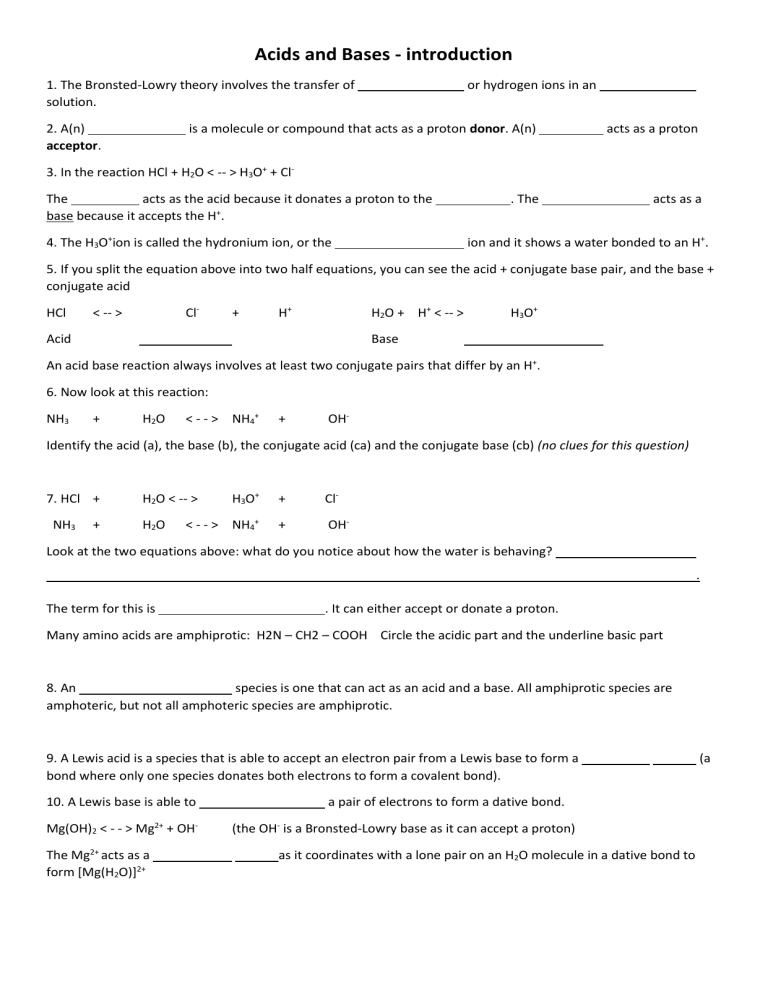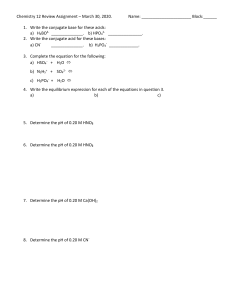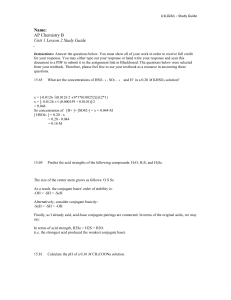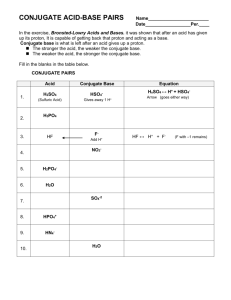
Acids and Bases - introduction 1. The Bronsted-Lowry theory involves the transfer of solution. 2. A(n) acceptor. or hydrogen ions in an is a molecule or compound that acts as a proton donor. A(n) acts as a proton 3. In the reaction HCl + H2O < -- > H3O+ + ClThe acts as the acid because it donates a proton to the base because it accepts the H+. 4. The H3O+ion is called the hydronium ion, or the . The acts as a ion and it shows a water bonded to an H+. 5. If you split the equation above into two half equations, you can see the acid + conjugate base pair, and the base + conjugate acid HCl Cl- < -- > + H+ H2O + H+ < -- > Acid H3O+ Base An acid base reaction always involves at least two conjugate pairs that differ by an H+. 6. Now look at this reaction: NH3 + H2O < - - > NH4+ + OH- Identify the acid (a), the base (b), the conjugate acid (ca) and the conjugate base (cb) (no clues for this question) 7. HCl + NH3 + H3O+ + Cl- < - - > NH4+ + OH- H2O < -- > H2O Look at the two equations above: what do you notice about how the water is behaving? . The term for this is . It can either accept or donate a proton. Many amino acids are amphiprotic: H2N – CH2 – COOH Circle the acidic part and the underline basic part 8. An species is one that can act as an acid and a base. All amphiprotic species are amphoteric, but not all amphoteric species are amphiprotic. 9. A Lewis acid is a species that is able to accept an electron pair from a Lewis base to form a bond where only one species donates both electrons to form a covalent bond). 10. A Lewis base is able to Mg(OH)2 < - - > Mg2+ + OHThe Mg2+ acts as a form [Mg(H2O)]2+ a pair of electrons to form a dative bond. (the OH- is a Bronsted-Lowry base as it can accept a proton) as it coordinates with a lone pair on an H2O molecule in a dative bond to (a conjugate base aqueous dative bond HCl H2O Lewis acid base protons H2O donate oxonium amphoteric amphiprotic conjugate acid acid







